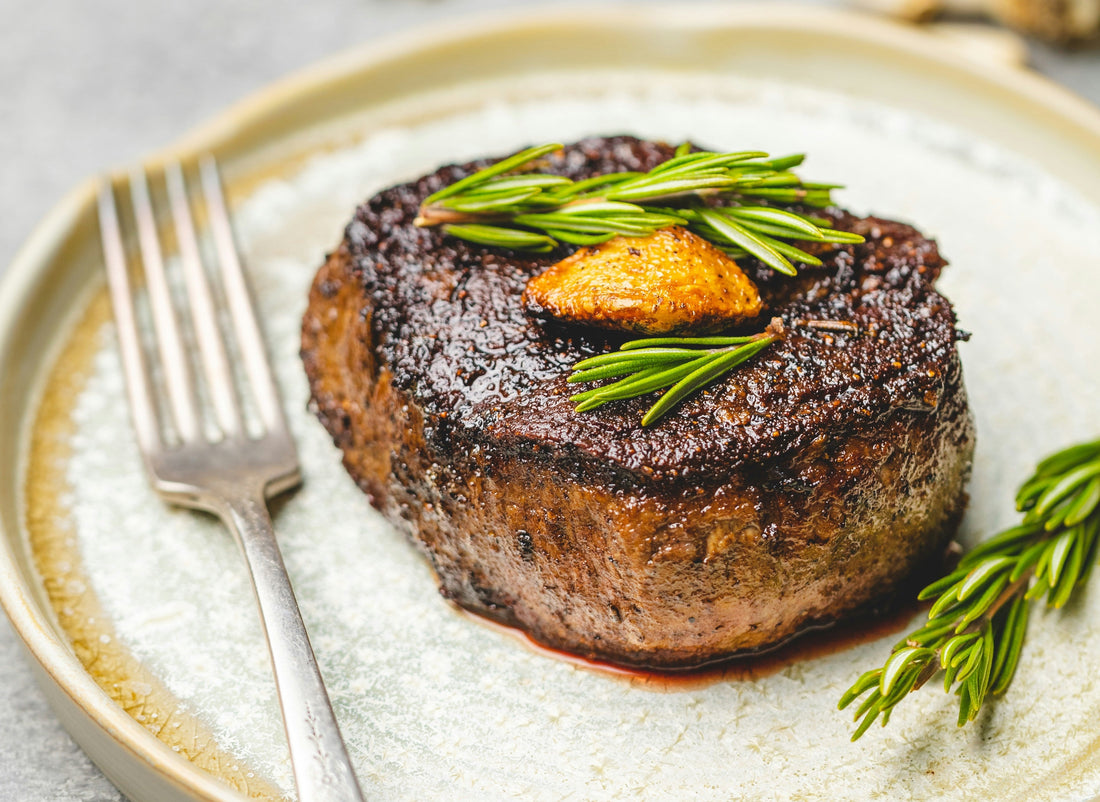
Why Grass-Fed Beef Tastes Better (and Is Better for You)
Share
When it comes to choosing beef, the difference between grass-fed and grain-fed isn’t just a buzzword—it’s a matter of flavor, nutrition, and health. Grass-fed beef offers a richer, more robust taste along with impressive health benefits. In this post, we’ll explore why grass-fed beef tastes better and why it’s a healthier choice for you and your family.
Does Grass-Fed Beef Taste Different?
Grass-fed beef has a distinct taste that sets it apart from grain-fed beef. It often tastes more rich and beefy. Here’s why:
Natural Diet: Grass-fed cattle graze on pasture rather than being fed grain-heavy diets. This natural diet gives the beef a more complex, earthy flavor.
Leaner Meat: Because grass-fed beef has less fat marbling, the flavor is more concentrated in the meat itself, providing a bold and vibrant taste.
Seasonal Variation: The flavor of grass-fed beef can change slightly depending on the season and the types of grasses available, offering a unique culinary experience.
Healthier Fat Profile: The balance of fats in grass-fed beef—including omega-3 fatty acids—contributes to a fresher, cleaner taste.
What are the Health Benefits of Grass-Fed Beef?
Grass-fed beef doesn’t just taste better; it’s better for your body too. Here are some key health advantages:
1. Higher Levels of Omega-3 Fatty Acids
Omega-3 fatty acids are essential for heart and brain health. Grass-fed beef contains significantly more omega-3s than grain-fed beef, helping to reduce inflammation and support cardiovascular health.
2. More Antioxidants
Grass-fed beef is a good source of antioxidants like vitamin E and beta-carotene, which help combat oxidative stress and promote overall well-being.
3. Lower in Saturated Fat
Because it’s naturally leaner, grass-fed beef contains less unhealthy saturated fat, making it a better option for those watching their fat intake.
4. Rich in Conjugated Linoleic Acid (CLA)
CLA is a beneficial fatty acid linked to improved immune function and reduced body fat. Grass-fed beef contains up to five times more CLA than grain-fed beef.
5. Packed with Essential Nutrients
Grass-fed beef is a great source of vitamins and minerals, including B vitamins, iron, and zinc—all crucial for energy production, immune health, and muscle function.
Are there Environmental Benefits associated with Grass-Fed Beef?
Choosing grass-fed beef supports a more sustainable food system. Here’s how:
Healthier Soil: Grass-fed cattle help maintain soil health by naturally fertilizing the land and encouraging diverse plant growth.
Reduced Carbon Footprint: Properly managed grazing systems can sequester carbon in the soil, helping to offset greenhouse gas emissions.
No Chemical Feed Additives: Grass-fed cattle aren’t fed antibiotics or growth hormones, which is better for both the environment and public health.
Ethical Farming Practices: Many grass-fed operations prioritize animal welfare, allowing cattle to roam freely and live healthier lives.
How do I Cook Grass-Fed Beef for the Best Flavor?
To fully appreciate the superior taste of grass-fed beef, it’s important to adjust your cooking methods:
Don’t Overcook It: Grass-fed beef cooks faster than grain-fed due to its lower fat content. Aim for medium-rare to medium doneness.
Use a Marinade: Marinades help tenderize the meat and add extra flavor.
Bring to Room Temperature: Let the beef sit out for 20-30 minutes before cooking to ensure even cooking.
Rest the Meat: After cooking, let it rest for 5-10 minutes to allow the juices to redistribute.
Use Simple Seasonings: Salt, pepper, and herbs are often all you need to enhance the natural flavors.
Is Grass-Fed Beef Worth the Investment?
While grass-fed beef may be slightly more expensive than grain-fed beef, the benefits far outweigh the cost. You’re not just investing in better flavor but also in your health and the environment. Plus, supporting local farmers who prioritize natural, ethical farming practices helps sustain your community.
Grass-fed beef delivers on taste, nutrition, and sustainability. Whether you’re grilling a steak or slow-cooking a roast, this naturally raised beef offers a bold and vibrant culinary experience that’s good for you and the planet. Next time you shop for beef, consider choosing grass-fed—your taste buds and body will thank you.

